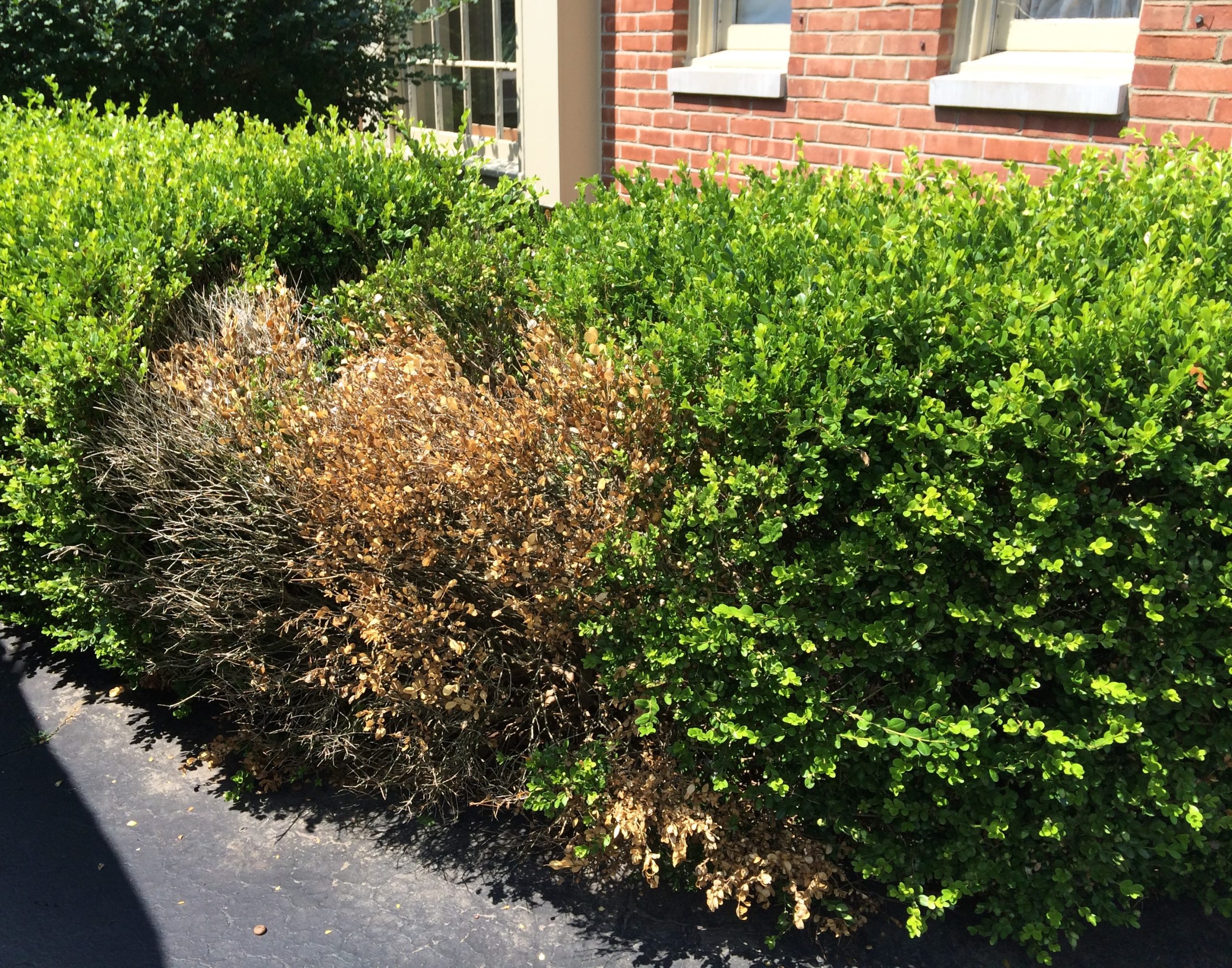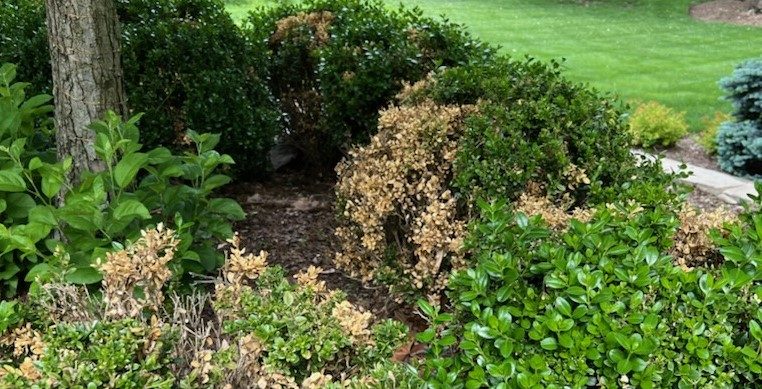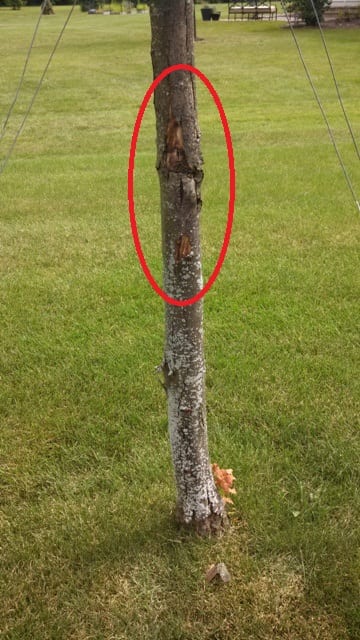Growing Degree Days
At the time of writing, Central Ohio is at 140 GDD (Growing Degree Days). On the same date last year, we were at 134 GDD. If you’re unfamiliar with where to find Growing Degree Days for your area, start by searching online for “Growing Degree Days [Enter Your State].” This should take you to your state’s land grant university phenology website, where you can add your zip code and automatically calculate your GDD.
These calculated days will help give you a heads-up on emerging insects and ornamental plant bloom times so you can time your fungicide, bactericide, and insecticide or horticultural oils to be the most effective. GDD will even help you time your pre-emergent applications on turf, which you should complete when forsythia ‘“Northern Lights” are in full bloom (GDD 94).
Evaluating Ornamental Health
Assessing landscapes every early spring is important because small issues can become bigger if left unchecked through the growing season. Check for winter injury from dry, cold winds and wet soils, such as foliage bronzing, new frost cracks on young trees, and root health issues on new transplants.

Winters are harder on young or newly transplanted (year or less) plant material. Transplant shock symptoms may look similar to winter injury but can happen any time of year. It can lead to plant death unless you intervene to help with root growth—speeding establishment and improving nutrient uptake. Many woody ornamentals can take three to five years to establish new roots into the surrounding native soil, depending on amendments and the amount of clay soil present. Foliar-Pak Grow-In can help with any struggling ornamental plants.
 When there are little to no leaves on shrubs and trees, you can see the branches, trunks, and main stems to assess whether a canker has formed or broken branches from physical damage are present. Removing these damaged and diseased branches and stems without leaves is much easier and will relieve the plant from unnecessary stress when it’s finally ready to push leaves out and start growing.
When there are little to no leaves on shrubs and trees, you can see the branches, trunks, and main stems to assess whether a canker has formed or broken branches from physical damage are present. Removing these damaged and diseased branches and stems without leaves is much easier and will relieve the plant from unnecessary stress when it’s finally ready to push leaves out and start growing.
For evergreen trees and shrubs, it’s a great time to remove damaged and diseased branches too. Winter damage can be more visible on evergreens due to needle discoloration. Depending on size, this may appear as bronzing on one or multiple sides of the plant. Don’t assume a bronzed arborvitae or boxwood is dead! They can regain color as temperatures warm—just note to keep an eye on them. Winter’s dry winds, cold temperatures, and oversaturated soils all contribute to typical winter injury symptoms.
Early Spring Ornamental Diseases
Fireblight is a bacterial disease that affects crabapples and ornamental pears. Infection occurs at bloom. The best plan to prevent infection is to prune out dead or damaged branches in winter (dormant pruning) and spray with copper-based bactericide to help prevent new infections in late winter or early spring and during bloom.
Diplodia tip blight affects two- and three-needle pines (Austrian, mugo, red, and scots), while Rhizospharea needle cast affects spruces. Infection occurs on new needle growth as they emerge in the spring. Protecting the new growth is key and may require two or three fungicide applications to get through spring rains along with new needle growth.
Root rot will begin to show symptoms as plants leaf out for the spring. There are multiple diseases (Phytophthora, Pythium, Rhizoctonia, and Thielaviopsis, to name a few) that can cause root rot, along with poor, wet soils. There may be a delay in bud break, or plants may be brown, dry, and dead. On evergreens, it will look like a needle drop with no new growth tips being produced. Finding out if you have a disease issue versus environmental issues is important for treatment (if there is one) and your bottom line. Root rot disease treatment may be a series of fungicide root drenches to protect existing plants, and environmental issues may be a root drench with Foliar-Pak Grow-In, Carbosential Fe, or Gold Standard 45—or a replant with more soil amendments. Both issues may lead to continued plant replacement if not correctly diagnosed.
A quick note on insects and GDD: white pine weevil adults have started to emerge, and eastern tent caterpillar eggs have started to hatch in Central Ohio. Mid to late April is a great time to complete a Merit (imidacloprid) or Safari (dinoteferon) drench to treat these.
Review our new ornamental fungicide guide for help selecting the correct fungicide to prevent disease, and reach out to your sales rep if you have any questions. Protecting new growth during the wettest portion of our growing season is key for a great start to the year!













